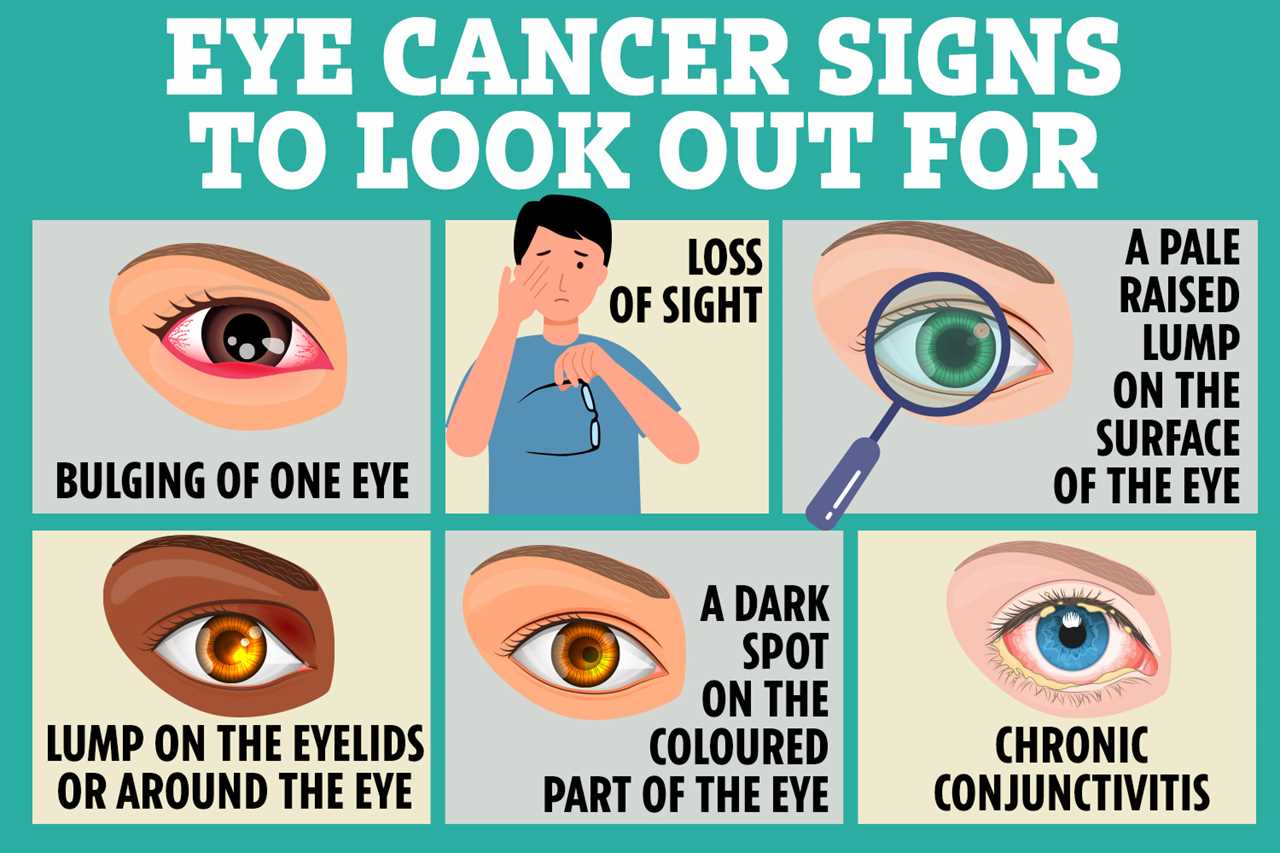
Spotting the signs
When it comes to cancer, we often think about the common areas it affects like the lungs, breasts, or colon. But did you know that cancer can also affect your eyes? While it is very rare, there are about 850 cases of eye cancer diagnosed in the UK every year. According to Cancer Research UK (CRUK), the risk of developing eye cancer increases as you get older, with almost 25% of cases occurring in individuals aged 75 and older. However, there is one type of eye cancer, called retinoblastoma, that mainly affects children under the age of five. It's important to be aware of the potential signs and symptoms of eye cancer, as early detection can greatly improve treatment outcomes.
What to look out for
Eye cancer can manifest both inside and outside the eye, as well as on the eyelids. While it may not always present obvious signs, there are some symptoms that you might be able to spot yourself. According to CRUK, these include:
- Bulging of one eye
- Complete or partial loss of sight
- Pain in or around the eye (though this is rare with eye cancer)
- A pale raised lump on the surface of the eye
- Blurred vision
- Change in the appearance of the eye
- Lump on the eyelids or around the eye
- Seeing spots, flashes of light, or floaters in front of your eyes
- Loss of peripheral vision
- A dark spot on the iris that is getting bigger
- Eye irritation, red eye, or chronic conjunctivitis
It's important to note that conjunctivitis, also known as pink-eye, can sometimes be a symptom of eye cancer. If you experience pink or red tinge in your eyes, along with swelling, watery or itchy eyes, and the persistent feeling that something is in your eye, it's recommended to see a doctor.
When to seek medical attention
Given the rarity of eye cancer, it's more likely that the above symptoms may be caused by other eye conditions. However, it's still important to have them investigated. If you experience any of these symptoms, it is advised to flag them with your GP or an optometrist. The earlier eye cancer is detected, the easier it will be to treat. CRUK recommends writing down your symptoms, when they started, and how often you experience them. It may also be helpful to note anything that worsens or improves your symptoms.
Protecting your eyes
While the risk of eye cancer is relatively low, there are some factors that may increase your chances of developing it. CRUK notes that individuals with blue, grey, or green eyes are more susceptible to eye melanoma. Additionally, having a large number of moles can also raise your risk. Exposure to artificial UV radiation, such as that emitted by sunbeds, can increase the risk of eye melanoma and squamous cell carcinoma of the eye. Furthermore, the human papilloma virus (HPV), known for causing cervical cancer, may also contribute to the development of squamous cell carcinoma of the eye when combined with other factors.
To protect your eyes from potential harm, The Skin Cancer Foundation suggests a few simple measures:
- Wear sunglasses year-round that block 99 to 100% of both UVA and UVB light
- Wear a hat with at least a three-inch brim to shield your face and eyes
- Apply SPF, even in the winter
- Be cautious around water, snow, and sand, as sunlight reflects off these surfaces
- Be aware of UV intensity at higher altitudes and protect your eyes while engaging in activities like skiing, snowboarding, and hiking
- Seek shade whenever possible, especially during peak sun hours
By taking these precautions, you can help reduce your risk of eye cancer and other eye conditions related to UV exposure.






